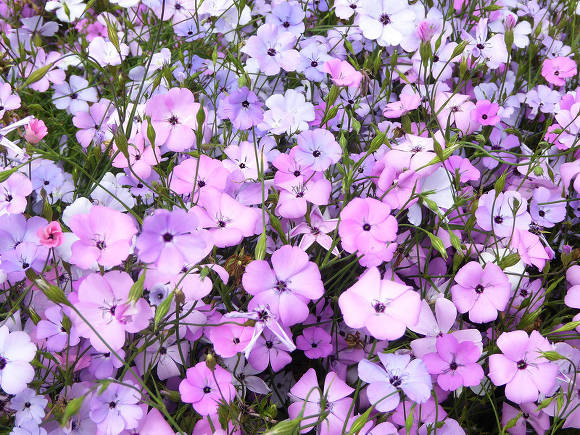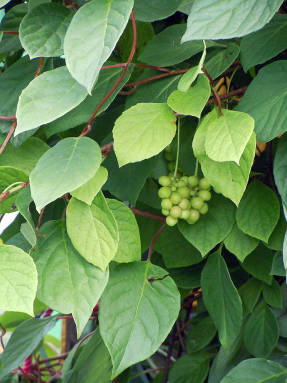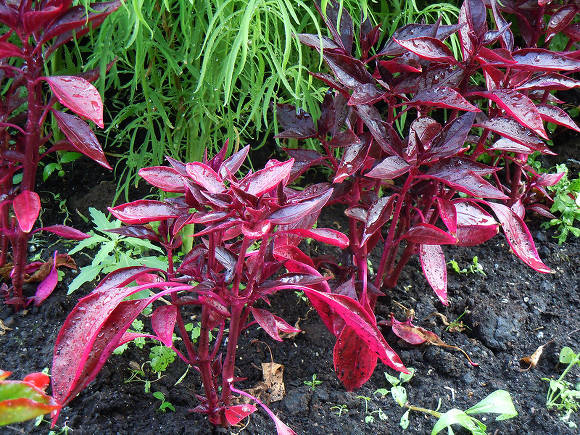Beginning in the article Marsh calamus is a universal remedy.
The use of calamus in official and traditional medicine
Modern medicine actively uses the raw materials of calamus marsh (Acorus calamus)... In pharmacies, you can find calamus rhizome, as well as extracts prepared from it, bitters and calamus oil. In addition, it is used as part of various fees, used in the manufacture of plasters.
 |
Calamus preparations are most widely used in medicine in gastroenterology as bitterness. The bitter glycoside acorin contained in the essential oil of calamus reflexively stimulates gastric secretion, especially the release of hydrochloric acid, while increasing appetite and improving digestion. In addition, it increases the biliary function of the liver, the tone of the gallbladder and urine output.
So, for the prevention and treatment of urolithiasis and gallstone disease, complex preparations are used, which include calamus oil. And in case of gastric ulcer and duodenal ulcer, as well as hyperacid gastritis, drugs "Vikalin", "Ultoks" and "Vikair" are prescribed, which include powder of calamus rhizomes. Less commonly, plant preparations are used for cholecystitis and hepatitis of various origins.
Calamus is also of great importance in dentistry.
In connection with the anti-inflammatory, antiseptic, analgesic effect, the remedies for calamus are recommended for glossitis, gingivitis, periodontal disease and other inflammatory processes of the oral mucosa.
In gynecological practice, a decoction of calamus in combination with an infusion of grass cuffs are used for douching for colpitis of coccal and Trichomonas etiology. It is also used for hypomenstrual syndrome, secondary amenorrhea, ovarian failure and pathological menopause.
The range of application of calamus root in folk medicine is much wider than in scientific.
In Tibetan medicine calamus rhizome is used as a tonic and antihelminthic agent; it is a part of plasters for the treatment of certain bone lesions. There are also Tibetan smoking sticks for disinfection and cleaning of premises during infectious diseases: calamus rhizome, Gugul resin (Vatica Laneafolia), Hedychium spicatus rhizome, asafoetida resin and coal to ensure slow combustion.
In Chinese medicine rhizome of calamus marsh is used as a tonic, stimulant, antiphlogistic agent, as well as for flatulence. In addition, its drugs are prescribed for rheumatism. Calamus tincture, according to Chinese doctors, improves vision and hearing. The rhizome, together with the leaves, is used as an antipyretic agent, externally in the form of hot baths.
In India the company "Dolkar" from the rhizome and leaves of calamus prepare smoking medicinal sticks, which are called "Asafetida". It should be noted that in its pure form, ground calamus root does not smell very pleasant when incensed. Obviously, this is due to the presence of starch and a large amount of fiber in them. Therefore, the remark of the famous scientist from Khorezm Abu Reikhan Biruni (973 - c. 1050) about the necessary kind of fermentation to which the raw materials are subjected: starch is destroyed, and essential oils remain.
Calamus marsh, as a very strong drug, is a part of Mongolian prescriptions for the treatment of skin diseases.
In Germany and Switzerland (less in France) calamus rhizome is widely used as an aphrodisiac, tonic for the gastrointestinal tract, anti-inflammatory and aromatic agent.
In Bulgaria calamus rhizome is considered one of the best gastric, bitter remedies, which stimulates appetite, improves digestion, and also has an anesthetic effect on mucous membranes and is therefore widely used.Essential oil is used for hysteria, stomach cramps, etc.
In Poland calamus is used externally - for hair loss in the form of a concentrated decoction, which is rubbed into the scalp.
 |
Calamus recipes at home
Considering that marsh calamus is used for a wide range of diseases, there are a great many recipes with it. First of all, it is used for diseases of the gastrointestinal tract.
With the above diseases, you can prepare decoction of calamus rhizomes... The broth is prepared as follows: 10 g (2 tablespoons) of raw material is placed in an enamel bowl and 200 ml (1 glass) of hot boiled water is poured, covered with a lid and heated in boiling water (in a water bath) for 15 minutes, then cooled for 45 minutes, filtered , the remaining mass is wrung out. The resulting infusion is diluted with boiled water to an initial volume of 200 ml. It is taken warm in 1/4 cup 3-4 times a day 30 minutes before meals. Store in a cool place for no more than 2 days.
For some diseases, slightly modified recipes are more effective.
With colitis and fermentative dyspepsia, accompanied by bloating and gurgling, calamus is cooked in rice water: 1-2 tbsp. spoons of washed rice and 10 g of chopped calamus rhizomes are poured with 1.5-2 cups of water, boiled for 20 minutes, filtered and drunk warm 3-4 times a day, 1/2 cup instead of food for 1-2 days.
With hepatitis rhizomes of calamus, immortelle, St. John's wort take in equal parts. Collect one tablespoon in a glass of water. Boil for 5 minutes. Take half a glass 3-4 times a day before meals.
With diseases of the gallbladder pour a teaspoon of chopped calamus rhizomes with a glass of boiling water, leave for 20 minutes, drain. Take 1/2 cup infusion 4 times a day.
As mentioned above, this plant is an excellent antiseptic.... With diarrhea of any origin, take 2 teaspoons of calamus powder, brew with a glass of boiling water and insist for 2 hours in a tightly sealed container. Then strain and drink 1/4 cup 3 times a day half an hour before meals.
With such an unpleasant phenomenon as heartburn,calamus is a favorite folk remedy. With heartburn drink a quarter of a teaspoon of powdered raw materials with a sip of water. You can chew on a small piece of the root and swallow it. Even very annoying heartburn stops if you take a fine powder from calamus rhizomes at the tip of a knife 3 times a day.
With stomatitis and gingivitis use a warm infusion for mouthwash. Pour a teaspoon of chopped rhizomes with 1.5 cups of boiling water, leave for 2 hours, drain. In this case, you can also use an alcoholic tincture diluted with water. For its preparation, 20 g of crushed rhizomes are poured with 100 g of 70% alcohol and insisted for 8 days in a dark place. Take 20 drops 3 times a day before meals. This tincture in the form of a compress will also help with toothache.
For strengthening teeth and gums, as well as for periodontal disease Calamus root powder is mixed into the tooth powder at the rate of 0.2-0.5 g at a time. Brush your teeth 3 times a day. In case of periodontal disease, the gums should be additionally treated with calamus infusion.
With hemorrhoids make sitz baths from a decoction of 30 g of calamus rhizome per 1 liter of water. For various gynecological inflammatory processes, it is also used in the form of sitz baths or douching.
In case of impaired peripheral circulation in the extremities (if hands and feet are constantly cold) "hand" and "foot" hot baths with calamus should be taken. Do not dry yourself after the bath.
Other application
 |
Marsh calamus also has an insecticidal effect (similar to pyrethrum, but less powerful). Thus, the inhabitants of the countryside have long known well that it destroys fleas and other parasitic insects.
There is also information about the use of calamus rhizomes for tanning leather.
A fragrant oil was prepared from calamus, which was used in religious worship.Biruni describes a very amazing way of obtaining incense from the roots of calamus: "In various incense, this plant is used only when it decays and crumbles. They say that in those places there is a pass; when this plant is transported through it, its particles rot and it becomes usable for their use in medicines and incense. If it is carried through other passes and places, then its particles do not separate from each other, but on the contrary, they become hard and strong like other grains. "
Essential oil from rhizomes is used in cosmetic and perfumery (for aromatizing toilet soap and lipsticks, as well as preparations for baths), alcoholic beverage (for preparing bitter vodkas, liqueurs, fruit essences) and the fishing industry (for giving fish a pleasant aroma and slightly bitter taste) , culinary and confectionery production.
Calamus rhizomes dried and ground into fine powder are a traditional spice of Indian and Islamic cuisine, used to prepare sweet dishes and compotes. In England and America, candied candied fruits are made from it. For this, pieces of fresh root must be placed in thick sugar syrup or honey, boil for 5-10 minutes, then remove, drain the syrup, dry and sprinkle with powdered sugar.
Since ancient times, it has been ranked as a spice, and the dried rhizome is used instead of bay leaves, cinnamon, and ginger. In addition, calamus is a good seasoning for stews. However, because of the bitter taste, it is better to use this spice carefully and add it when stewing and in soups, not chopped up, and then remove.
From very young leafy shoots of this plant, you can prepare a delicious tonic salad.
Cm. Fish baked with calamus seasoning, Calamus leaf salad, Zucchini jam with calamus, Jam with calamus rhizomes, Calamus rhizomes in sugar, Kvass with calamus, Calamus compote, Spicy liqueur with calamus.







